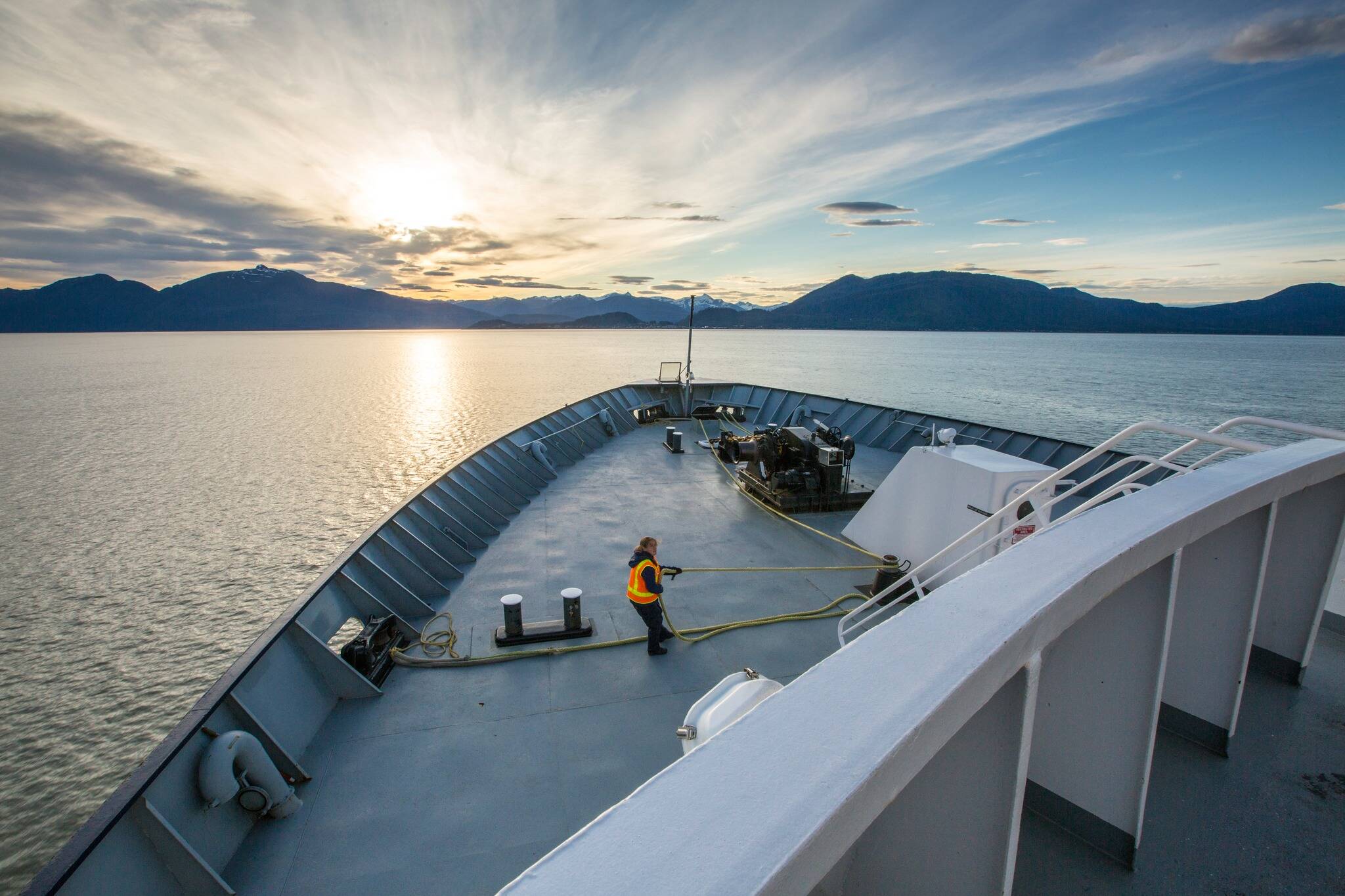The Alaska Marine Highway System’s ongoing crew shortage has eased up for entry-level steward positions, but remains a significant problem in the wheelhouse and for engineers, likely keeping the Kennicott out of service again this summer.
As of March 8, the state ferry system was short almost 50 crew of what it would need to put its full operational fleet to sea this summer, which means keeping the Kennicott tied to the dock, Craig Tornga, the system’s marine director, reported to a state Senate budget subcommittee on March 19.
That is about half the crew shortage of a year ago.
The Kennicott, the second-largest operational vessel in the fleet, has been used to fill in for the Columbia when that ship is out of service for winter overhaul, but the Kennicott was held at the dock last summer and is not on the schedule again this summer as the state tries to manage with a crew shortage now in its third year.
Resignations and retirements have outpaced new hires since 2019.
In addition to attending job fairs, visiting schools and conducting a national advertising campaign to recruit new hires, the state in February 2022 contracted with an Anchorage-based company to help find applicants for jobs aboard the ferries. That effort, however, has produced negligible results.
The contractor, PeopleAK (formerly Alaska Executive Search), referred about 250 applicants to the state in 2022, but only a dozen were hired in the first year of the contract. Last year, the company forwarded almost 280 applicants to the ferry system, which hired three of them.
The company was “missing the mark at first” in recruiting qualified applicants for maritime jobs, Tornga said in an interview after his testimony at the Senate Finance subcommittee on the Marine Highway System budget for the fiscal year that starts July 1.
PeopleAK now better understands what is required of qualified applicants, he said.
Though the state has not hired 95% of the applicants referred by the contractor, it’s not out much money: The state pays PeopleAK only for the applicants hired, at the rate of $5,000 per new hire.
Without the Kennicott on the schedule, Wrangell this summer will see the same service as recent years — one northbound and one southbound ferry each week.
And without the Kennicott, the state is unable to resume the popular service between Southeast Alaska and Prince Rupert, British Columbia, which offered travelers a much less costly highway-connection alternative to ferrying their vehicles all the way to Bellingham in Washington state’s Puget Sound.
Part of the problem in recruiting new hires, particularly licensed crew such as mates and engineers, is money, Tornga said.
The ferry system pays non-residents less than Alaska residents — and has for decades — which makes the Alaska jobs less attractive as the state tries to recruit licensed mariners from the Lower 48.
“We’re not competitive with our out-of-state rate,” Tornga said.
In addition, non-residents hired for the job have to pay their own travel expenses to and from Alaska to board their assigned vessels, he said.
Another impediment is that junior engineers and oilers who want to advance to third, second or first engineer or chief engineer jobs need to go to school for five months, at their own expense, at a cost of about $30,000, Tornga said.
Even when new hires come aboard, housing is a problem, he explained. The state houses new crew for three months aboard the Matanuska, which is tied up out of service in Ketchikan, awaiting a decision on whether the state wants to spend millions of dollars to replace rusted steel and make other upgrades.
After three months, the workers need to move off the ship into their own housing.
“When they do find it, they can’t afford it,” Tornga said.
Besides for advertising and working with its recruitment contractor, he told senators the Marine Highway System has hired its own recruiting staffer, attended career days at maritime academies nationwide and at high schools in coastal Alaska communities, and is working with a union to see if retirees would like to come back to work.

